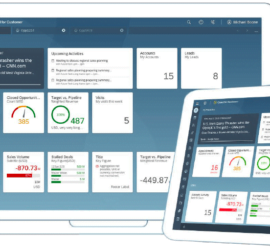 Contact us
Contact us How To Build a Customer Experience (7 Pillars)
1.Brand Purpose
The ‘why’ behind the brand, why it exists, and what it stands for. Purpose provides meaning and the focus within an organization; it defines the brand’s role in culture and how people will connect with it, and importantly use provides an authentic narrative. Ultimately, the purpose is the most profound expression of a brand, providing an understanding of how the brand impacts the wider community. Importantly, it unites the customer and the organizations’ culture in pursuit of its intention.

2. Organizational Alignment
Cooperation is the best way to ensure that all divisions are delivering exceptional customer experiences. Alignment brings together marketing, customer service, sales, IT, HR, and operations with a customer-first culture, ensuring there are no gaps between what is promised by the brand and what is delivered to the customer. Many organizations will find cultural alignment around the delivery of customer experiences challenging. Organizational leaders will need to foster a customer-first mindset. Coupled with the collaboration of internal stakeholders to bring together operational data (O-data), CRM databases, and customer feedback (X-data), ensuring there is a closed-loop sharing of intelligence.

3. Customer Journey
Mapping is a powerful tool to understand the customer purchase journey. Mapping the brand touchpoints from the customers’ perspective helps marketers understand how customers are interacting with the brand. A journey map represents the brand/ customer interactions in each channel as the customer experiences it, including their online search, website research, in-store visits, online purchasing behaviors, social media discussion, and customer service interactions. The process helps understand customers’ needs and expectations at each brand intersection. Using topline data, customer feedback, one-on-one interviews, focus groups, and ethnography, the process clarifies customer needs, behavior, perspectives, and moments of truth. The process serves as a framework for designing and optimizing the brand’s touchpoints to minimize gaps and customer pain points.

4. Keeping the Promise
This is what is required in every interaction within the brand. A brand promise signifies and values what is created by the brand. The more clearly the commitment is articulated across the customer touchpoints and folder into the experiences, the more likely the brand is to be perceived as authentic, true to its values, and fulfilling its customer needs. Organizations need to align the whole of the organization, its culture, systems, and processes to effectively deliver the brand promise in every channel to foster customer satisfaction and advocacy.

5. Technology
Is providing people with access to information anytime and anywhere they choose. Innovation is set to intensify, as smart, connected products emerge, triggering more innovation, higher productivity, sustained economic growth, and a new era of competition. Brands now collect personal data such as location, language, times of interaction, and purchase preferences to create rich customer profiles that predict their real-time needs to deliver personalized and seamless experiences. Technology and social platforms are driving new economic models around empowered consumerism called ‘collaborative consumption,’ where goods and services are accessed rather than privately owned.

6. Co-creation
It is the practice of engaging and involving customers and brand fans in seeking knowledge, strategic insights, problem-solving solutions, innovation, and design. Customers are actively involved in product or service innovation and joint creation of value to deliver improvement in existing offerings or create new ideas from which both the organization and the customer derives value. Co-creation draws together groups of diverse individuals with the potential to solve business challenges of all kinds and effectively create richer experiences.

7. Experience Management
And measurement necessitates an in-depth understanding of the relationship between customer behaviors and the experience. Experience management aims to provide a single view of customer experience across interactions, channels, products and services, and time. Leading indicators from different data sources measure the performance and business value generated from systematic improvements in customer experience and how this directly impacts customer satisfaction and advocacy.
Roman Kučák, CEO


